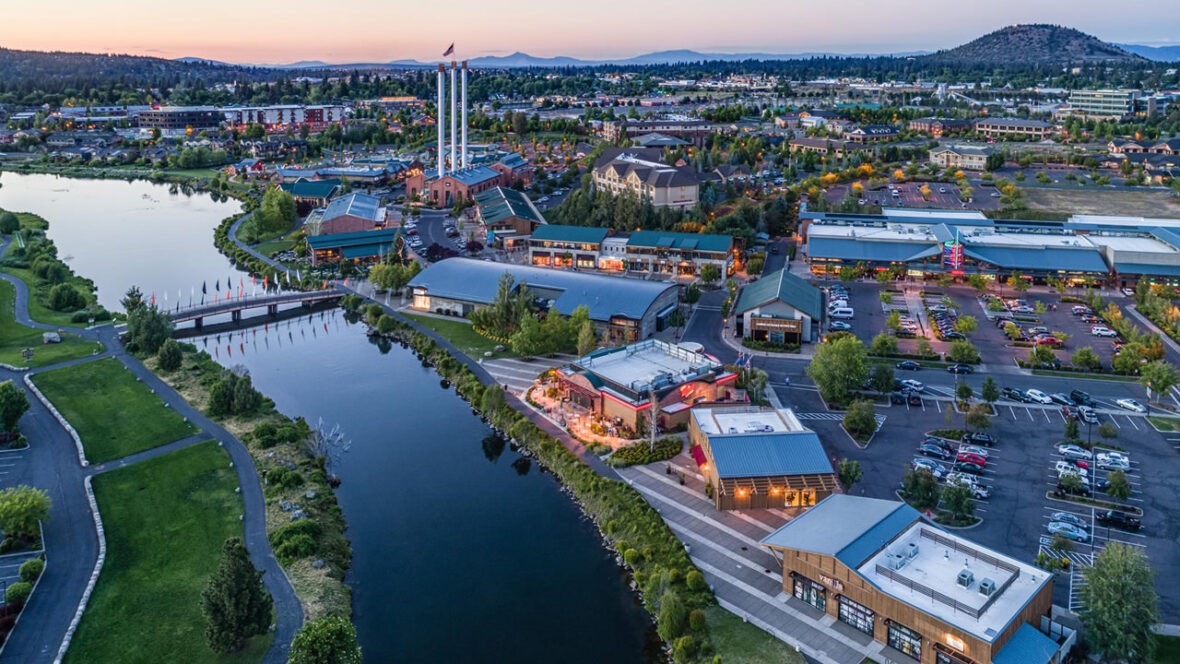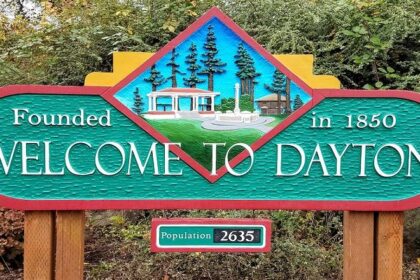Bend is a city in and the county seat of Deschutes County, Oregon, United States. It is the principal city of the Bend Metropolitan Statistical Area. Take a look below for 20 fun and awesome facts about Bend, Oregon, United States.
1. Bend is Central Oregon’s largest city and, despite its modest size, is the de facto metropolis of the region, owing to the low population density of that area.
2. Bend recorded a population of 111,822 at the time of the 2020 U.S. Census, up from 76,693 at the time of the 2010 U.S. Census, and 52,029 at the 2000 census.
3. The Bend metro population was 197,692 as of the 2020 census. It is the fifth largest metropolitan area in Oregon.
4. Bend is located on the eastern edge of the Cascade Range along the Deschutes River.
5. There the Ponderosa pine forest transitions into the high desert, characterized by arid land, junipers, sagebrush, and bitterbrush.
6. Originally a crossing point on the river, settlement began in the early 1900s.
7. Bend was incorporated as a city in 1905.
8. Economically, it started as a logging town but is now identified as a gateway for many outdoor sports, including mountain biking, fishing, hiking, camping, rock climbing, white-water rafting, skiing, paragliding, and golf.

9. The name “Bend” was derived from “Farewell Bend”, the designation used by early pioneers to refer to the location along the Deschutes River where the town was eventually platted, one of the few fordable points along the river.
10. Until the winter of 1824, the area was known only to Native Americans who hunted and fished there. That year, members of a fur-trapping party led by Peter Skene Ogden visited the area. John C. Frémont, John Strong Newberry, and other Army survey parties came next. Then pioneers heading farther west passed through the area and forded the Deschutes River at Farewell Bend.
11. Constructed in May 1901, the Pilot Butte Development Company’s little plant was the first commercial sawmill in Bend. The original location was at the rear of the Pilot Butte Inn of later years.
12. Steidl and Reed also set up a small mill in Bend in 1903. This was on the Deschutes River just below the Pioneer Park area. The mill was operated by water power.
13. A small community developed around the area, and in 1904, a city was incorporated by a general vote of the community’s 300 residents. On January 4, 1905, the city held its first official meeting as an incorporated municipality, appointing A. H. Goodwillie as the first mayor.
14. The settlement was originally called “Farewell Bend”, which was later shortened to “Bend” by the U.S. Postal Service.
15. In 1910, Mirror Pond was created by the construction of the Bend Water, Light & Power Company dam on the Deschutes River in Bend. The dam provided the city with its initial source of electricity. The dam has been owned by Pacific Power since 1926 and still produces electricity that supplies approximately 200 Bend households.
16. In 1916, Deschutes County, Oregon, was formed from the western half of Crook County and Bend was designated as the county seat. In 1929, Bend amended the charter and adopted the council–manager form of government.

17. According to the U.S. Department of Commerce’s Bureau of Economic Analysis, in 2005 construction and real estate accounted for 17.3 percent of all jobs in the Bend metropolitan statistical area (MSA), which constitutes all of Deschutes County.
18. The city is becoming known for its burgeoning art scene, and is home to numerous visual and fine art galleries as well as the independent BendFilm Festival.
19. There are numerous public art displays, including the Roundabout Art Route tour of outdoor sculptures throughout the city.
20. Bend is the home of the professional cross-country ski team XC Oregon, which competes in races locally, regionally, nationally and internationally.




